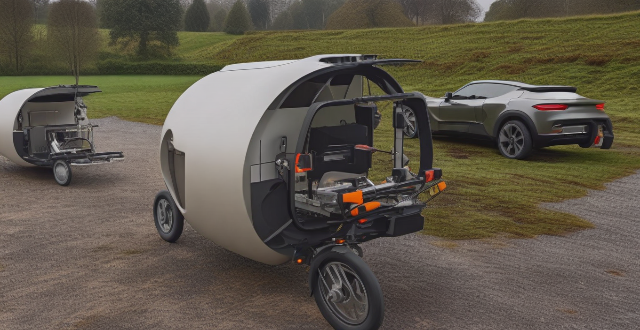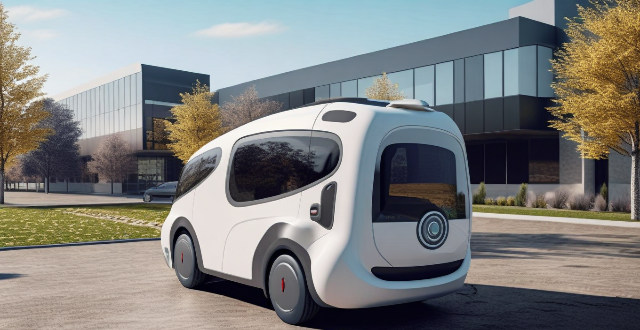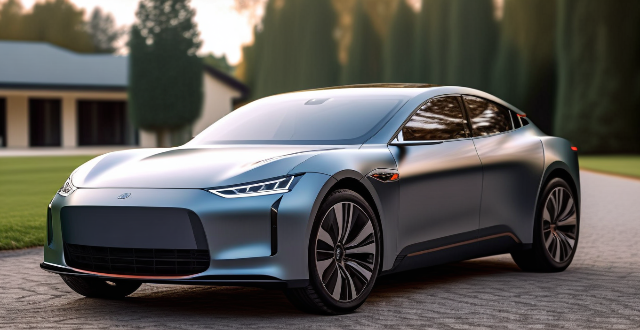Vehicle Device

How do I install an electronic speed controller in my vehicle ?
An Electronic Speed Controller (ESC) is a device that regulates the speed of an electric motor. It is commonly used in RC cars, drones, and other electronic devices to maintain consistent speed and improve performance. In the context of vehicles, an ESC can be used to control the speed of electric motors in electric or hybrid cars. Installing an ESC in your vehicle involves several steps, which may vary depending on the specific model and make of your vehicle. Here's a general guide to get you started: 1. Choose the right ESC for your vehicle. 2. Disconnect the battery before working on any electrical system in your vehicle. 3. Remove the old controller (if applicable). 4. Mount the ESC in a suitable location within your vehicle. 5. Connect wires and motor according to the manufacturer's instructions. 6. Reconnect the battery and test the system. There are several reasons why you might want to install an ESC in your vehicle, including improved performance, better control, and additional safety features such as overcurrent protection. When installing an ESC, it's important to follow the manufacturer's instructions, wear protective gear, and seek professional assistance if needed.

How does a Compound Hybrid Electric Vehicle work ?
A compound hybrid electric vehicle (CHEV) is a type of hybrid vehicle that combines the power of an internal combustion engine (ICE) with two or more electric motors, aiming to improve fuel efficiency, reduce emissions, and increase overall performance. The system intelligently manages multiple power sources to provide an efficient, powerful, and environmentally friendly driving experience.

Are there any government incentives for buying an electric vehicle ?
This text discusses the various government incentives available for buying an electric vehicle, including federal tax credits and income tax exemptions, state rebates and grants, sales tax exemptions, high-occupancy vehicle lane access, local parking benefits, and carpool lane access.

How does a Series Hybrid Electric Vehicle compare to a Parallel Hybrid Electric Vehicle ?
Comparison between Series Hybrid Electric Vehicle and Parallel Hybrid Electric Vehicle highlights the differences in power transmission, battery dependency, fuel efficiency, performance, cost, complexity, and regenerative braking capabilities of both types. The series hybrid is more efficient for city driving, while the parallel hybrid suits highway driving better. The choice depends on the user's driving habits and needs, with both offering environmental and economic benefits over traditional vehicles.

Are there any government incentives for purchasing a Series Hybrid Electric Vehicle ?
Government incentives for purchasing a Series Hybrid Electric Vehicle (HEV) vary by country and may include tax credits, rebates, exemptions from fees, charging infrastructure support, and parking benefits. These incentives can help offset the higher initial purchase price of HEVs compared to conventional gasoline vehicles.

How does a Series Hybrid Electric Vehicle work ?
A series hybrid electric vehicle (SHEV) is a type of hybrid car that utilizes two power sources: an internal combustion engine (ICE) and an electric motor. The ICE generates electricity to charge the battery pack, which in turn powers the electric motor to propel the vehicle. The main components of a series hybrid electric vehicle include the ICE, battery pack, and electric motor. The working process of a series hybrid electric vehicle involves starting the vehicle with the electric motor drawing power from the battery pack, driving at low speeds or during city driving using only the electric motor, increasing speed or accelerating by starting up the ICE to generate electricity and charge the battery pack, regenerative braking to convert kinetic energy into electrical energy and store it in the battery pack, charging the battery pack when its state of charge falls below a certain level, steady-state driving on highways with the ICE running at its optimal speed while the electric motor provides necessary power, and shutting down both the ICE and electric motor when the vehicle is turned off. Series hybrid electric vehicles offer benefits such as improved fuel efficiency, lower emissions, reduced wear and tear on the ICE, and regenerative braking.

How do hub motors affect the handling and performance of a vehicle ?
Hub motors offer numerous benefits for vehicle handling and performance, including improved weight distribution, torque vectoring, and energy recovery through regenerative braking. These features enhance a vehicle's overall efficiency, stability, and performance. As technology advances, we can expect to see more innovative uses for hub motors in the automotive industry.

How does a Series Hybrid Electric Vehicle impact the environment ?
Series hybrid electric vehicles (SHEVs) have a positive impact on the environment through reduced emissions and improved fuel efficiency. However, challenges such as battery production and waste management must be addressed to maximize their environmental benefits. The overall impact also depends on factors like the source of electricity for charging and vehicle design efficiency.

What is the driving range of a Series Hybrid Electric Vehicle ?
The driving range of a Series Hybrid Electric Vehicle (SHEV) is influenced by factors such as battery pack size, electric motor efficiency, and vehicle weight. Most SHEVs have a combined driving range of around 30-50 miles per gallon equivalent (MPGe), but actual range may vary due to factors like driving conditions and use of accessories. Proper maintenance and consideration of these factors can help maximize the fuel efficiency and environmental benefits of a SHEV.

How does a parallel hybrid electric vehicle (PHEV) work ?
Parallel hybrid electric vehicles (PHEVs) are a type of hybrid vehicle that combines an internal combustion engine (ICE) with an electric motor. The two power sources can work independently or together, depending on the driving conditions. PHEVs have three operating modes: ICE only, electric motor only, and combined power. The energy management system controls the operation of the ICE and electric motor, deciding which power source to use based on driving conditions, battery state of charge, and other factors. PHEVs offer benefits such as improved fuel efficiency, reduced emissions, tax incentives, and reduced dependence on fossil fuels.

How do I choose a car charger for my device ?
When selecting a car charger for your device, consider factors such as compatibility with your device's charging port, charging speed, number of ports, additional features, reviews and ratings, budget, and brand reputation. By doing so, you can find a reliable and efficient car charger that meets your needs.

How should I prepare my vehicle for a long-distance road trip ?
Preparing Your Vehicle for a Long-Distance Road Trip A long-distance road trip is an exciting adventure, but it's essential to ensure that your vehicle is in top condition before hitting the open road. Here are some steps you can take to prepare your car for the journey ahead: Check the basics such as tires, fluids, lights, and battery. Perform safety checks on brakes, suspension, belts, and hoses. Make sure your entertainment system and charging ports are working correctly. Consider installing seat covers and using organizers or storage solutions to keep items tidy and accessible during the trip. Don't forget to pack an emergency kit with jumper cables, a flashlight, reflective triangles, and a first aid kit just in case you encounter any issues along the way.

Can you drive a parallel hybrid electric vehicle (PHEV) on electricity alone ?
This article discusses the capabilities of parallel hybrid electric vehicles (PHEVs) and their ability to operate solely on electricity. It explains that PHEVs have an electric-only mode that allows them to drive without using the internal combustion engine, but this mode is typically limited to lower speeds and lighter load conditions. The article also highlights the benefits of electric-only driving, such as reduced emissions, quieter operation, and improved fuel efficiency. However, it notes that several factors can affect the electric-only range of a PHEV, including battery size, driving conditions, vehicle load, and tire pressure. Overall, the article emphasizes the importance of understanding your PHEV's capabilities and limitations to maximize its potential for eco-friendly driving.

What is the average fuel consumption of a typical fuel vehicle ?
The average fuel consumption of a typical fuel vehicle can vary depending on several factors such as the type of vehicle, driving conditions, and maintenance. However, we can provide a general overview of the fuel consumption rates for different types of vehicles: - Small cars typically have better fuel efficiency than larger vehicles, with an average fuel consumption of around 6-8 liters per 100 kilometers (L/100km). - Midsize cars usually have slightly higher fuel consumption rates compared to small cars, with an average fuel consumption of around 8-10 L/100km. - Large cars generally have higher fuel consumption rates due to their larger size and weight, with an average fuel consumption of around 10-12 L/100km. - Small SUVs are becoming increasingly popular and offer relatively good fuel efficiency, with an average fuel consumption of around 9-11 L/100km. - Midsize SUVs are larger and heavier than small SUVs, resulting in higher fuel consumption rates, with an average fuel consumption of around 11-13 L/100km. - Large SUVs are the largest and heaviest vehicles in this category, leading to higher fuel consumption rates, with an average fuel consumption of around 13-15 L/100km. - Light duty pickups are designed for carrying light loads and offer reasonable fuel efficiency, with an average fuel consumption of around 12-14 L/100km. - Medium duty pickups are larger and more powerful than light duty pickups, resulting in higher fuel consumption rates, with an average fuel consumption of around 14-16 L/100km. - Heavy duty pickups are designed for heavy-duty tasks and have the highest fuel consumption rates among pickup trucks, with an average fuel consumption of around 16-18 L/100km. It's important to note that these figures are just estimates and actual fuel consumption can vary based on individual driving habits, vehicle condition, and other factors. Additionally, newer vehicles with advanced technology may have lower fuel consumption rates than older models.

How do I troubleshoot a faulty network connection device ?
This text provides a step-by-step guide on how to troubleshoot a faulty network connection device. It starts by identifying the problem, checking physical connections, restarting the device, checking network settings, updating firmware, checking for interference, and finally contacting support if all else fails. The text emphasizes the importance of patience and perseverance in troubleshooting technical issues.

How long does a typical power battery last in an electric vehicle ?
Electric vehicles (EVs) have become increasingly popular due to their environmental benefits and lower operating costs. One of the most common concerns for potential EV owners is the lifespan of the vehicle's power battery. In this article, we will explore the typical lifespan of a power battery in an electric vehicle and factors that can affect it. The lifespan of a power battery in an electric vehicle depends on several factors, including the type of battery, driving habits, and maintenance practices. However, a general rule of thumb is that a typical power battery lasts between 8-15 years or 100,000-200,000 miles. Several factors can impact the lifespan of a power battery in an electric vehicle. These include: - Type of Battery: The two most common types of batteries used in EVs are lithium-ion and nickel-metal hydride. Lithium-ion batteries generally have a longer lifespan than nickel-metal hydride batteries. - Driving Habits: Frequent rapid acceleration and braking can shorten the lifespan of a power battery. Additionally, driving at high speeds and in hot temperatures can also negatively impact battery life. - Maintenance Practices: Proper maintenance practices, such as regularly checking and maintaining the cooling system, can help extend the lifespan of a power battery. Neglecting maintenance can lead to premature battery failure. - Charging Habits: Charging the battery to 100% every time can shorten its lifespan. It is recommended to charge the battery to around 80% to prolong its lifespan. As a power battery ages, it may start showing signs of failure. Some common signs include: - Reduced Range: If you notice a significant decrease in the distance your EV can travel on a single charge, it could be a sign that your power battery is failing. - Slow Charging: If your EV takes longer to charge than usual, it could be a sign that your power battery is losing capacity. - Decreased Performance: If you notice a decline in your EV's overall performance, such as slower acceleration or reduced top speed, it could be due to a failing power battery. - Bulging or Swelling: If you notice any physical changes to your power battery, such as bulging or swelling, it is a clear sign that it needs to be replaced. In conclusion, the typical lifespan of a power battery in an electric vehicle is between 8-15 years or 100,000-200,000 miles. However, several factors can impact the lifespan of a power battery, including the type of battery, driving habits, maintenance practices, and charging habits. By being mindful of these factors and properly maintaining your EV's power battery, you can help extend its lifespan and enjoy many years of reliable performance.

Can I use Apple Music without an Apple device ?
The text discusses the availability of Apple Music across various platforms, including Windows, Android devices, web players, and smart TVs and streaming devices. It highlights the key features available on each platform and concludes that users don't need an Apple device to enjoy Apple Music.

How do I set up parental controls on my child's Apple device ?
The text provides a step-by-step guide on how to set up parental controls on an Apple device for children. The steps include creating a family group, turning on Screen Time, setting up content and privacy restrictions, establishing downtime and app limits, and monitoring the child's device usage. The purpose of these steps is to ensure the child's safety and well-being while using technology by controlling what apps, websites, and features they can access, as well as when and how much they can use their device.

What is the maintenance required for a Series Hybrid Electric Vehicle ?
Maintaining a series hybrid electric vehicle (HEV) involves regular checks and replacements similar to conventional gasoline-powered vehicles, along with specific tasks for the electric components. These tasks include tire rotation and air pressure checks, battery state of charge monitoring, brake fluid exchange, oil changes, air filter replacement, spark plug inspection, belt and hose checks, electrical system maintenance such as battery pack health checks, electric motor lubrication, and inverter/converter diagnostics. Additional tips include following manufacturer guidelines, using genuine parts, scheduling regular check-ups, familiarizing with drive modes, avoiding heavy loads, keeping the interior tidy, and carrying an emergency kit.

How to use "Find My iPhone" to locate a missing device ?
The text provides a step-by-step guide on how to use the "Find My iPhone" feature to locate a missing Apple device. It emphasizes the importance of enabling the feature beforehand, signing in to iCloud, selecting the correct device, viewing its location on a map, and using additional features such as marking it as lost or erasing data remotely. It also suggests contacting local authorities if the device is believed to be stolen. Overall, it highlights the effectiveness of "Find My iPhone" in locating lost devices and protecting personal information.

What are the benefits of owning a parallel hybrid electric vehicle (PHEV) ?
Owning a parallel hybrid electric vehicle (PHEV) offers numerous benefits, including reduced emissions and conservation of fossil fuels, leading to environmental advantages. Economically, PHEVs provide fuel cost savings and potential tax incentives. They also offer performance benefits such as silent operation, regenerative braking, and instant torque. Additionally, PHEVs often come with advanced technology and features, preparing owners for a future with more electric vehicles. Overall, PHEVs combine environmental responsibility, economic savings, performance enhancements, and technological innovation, making them an attractive sustainable mobility option.

How do I remove a device from my Apple account ?
Removing a device from your Apple account is a straightforward process that can be done in just a few steps. First, sign in to your Apple ID account page by going to [appleid.apple.com](https://appleid.apple.com) and entering your Apple ID and password. Then, view your devices by clicking on the "Devices" section. Choose the device you want to remove from the list of associated devices and click on it. To remove the device from your account, click on the "Remove" button. Confirm the removal in the pop-up window that appears. Finally, check your email for a confirmation message from Apple. Remember that removing a device from your account does not delete any data stored on the device itself; it only removes access to your Apple services such as iCloud and the App Store.

Is it worth investing in a diesel hybrid vehicle for long-distance travel ?
Diesel hybrid vehicles offer high fuel efficiency and performance, making them suitable for long-distance travel. However, they come with higher costs and potential emission concerns. Alternatives like gasoline hybrids and electric vehicles might be worth considering depending on individual needs and circumstances.

How do I safely dispose of old or damaged electrical devices ?
This comprehensive guide outlines steps for safely disposing of old or damaged electrical devices, including identifying the type of device, checking with the manufacturer, contacting local authorities and recycling centers, donating or selling still-functional devices, properly packaging and transporting devices, considering environmental impacts, and avoiding harmful disposal methods.

How does the development of electric vehicle infrastructure affect the adoption rate of EVs ?
The development of electric vehicle infrastructure, including charging stations and supporting technologies, significantly influences the adoption rate of EVs. Availability and accessibility of charging stations are critical factors affecting EV adoption rates. Increased availability and reduced range anxiety can lead to higher demand for EVs and boost their adoption rate. Easy-to-find and accessible charging stations make it easier for potential EV owners to plan their trips and charge their vehicles as needed. The cost of charging an EV also affects its adoption rate, with affordable pricing and transparent pricing information encouraging more people to adopt EVs. Overall, the growth of electric vehicle infrastructure is crucial in determining the adoption rate of EVs.

How long does it take to charge a parallel hybrid electric vehicle (PHEV) ?
The charging time of a Parallel Hybrid Electric Vehicle (PHEV) is influenced by the battery pack size, charging method, and equipment used. Standard charging (Level 1) takes longer, while rapid charging (Level 2) significantly reduces charging time. Examples show that standard charging can take up to 15 hours for a full charge, while rapid charging can reduce this to 2-5 hours. Tips for faster charging include using rapid charging stations and ensuring high-quality charging equipment.

Can someone hack into my device through public Wi-Fi ?
Public Wi-Fi networks pose a significant risk to the security of your devices due to various types of attacks such as man-in-the-middle, eavesdropping, and malware distribution. To protect yourself from these threats, it is recommended to use a virtual private network (VPN), avoid accessing sensitive information on public Wi-Fi, keep your device up-to-date, use two-factor authentication, and be wary of rogue Wi-Fi networks. Following these tips can significantly reduce the chances of falling victim to hackers and protect your personal information from being stolen or compromised.

How do I install a car charger in my vehicle ?
Installing a car charger in your vehicle is a straightforward process that can be done with just a few tools and some basic knowledge of your car's electrical system. Here are the steps you need to follow: - Choose the right location for your car charger. - Disconnect the battery before working on your car's electrical system. - Remove the trim panel from the location where you want to install the car charger. - Run the wires from the car charger to the battery, making sure they are securely attached and not in the way of any moving parts. - Use a voltage tester to make sure there is power running through the wires. - Reassemble the trim panel, making sure it is securely in place and not blocking any controls or vents. - Test the car charger to make sure it is working properly by plugging in a device and seeing if it charges.

How do I know if a second-hand electronic device is still functional ?
Before buying a second-hand electronic device, it's important to check its functionality. Here are some steps you can take: visual inspection for physical damage, powering up the device, testing basic functions, checking battery life, connectivity tests, camera and microphone test, speaker and sound quality check, app testing, heat test, and resetting the device. By following these steps, you can make an informed decision about your purchase.